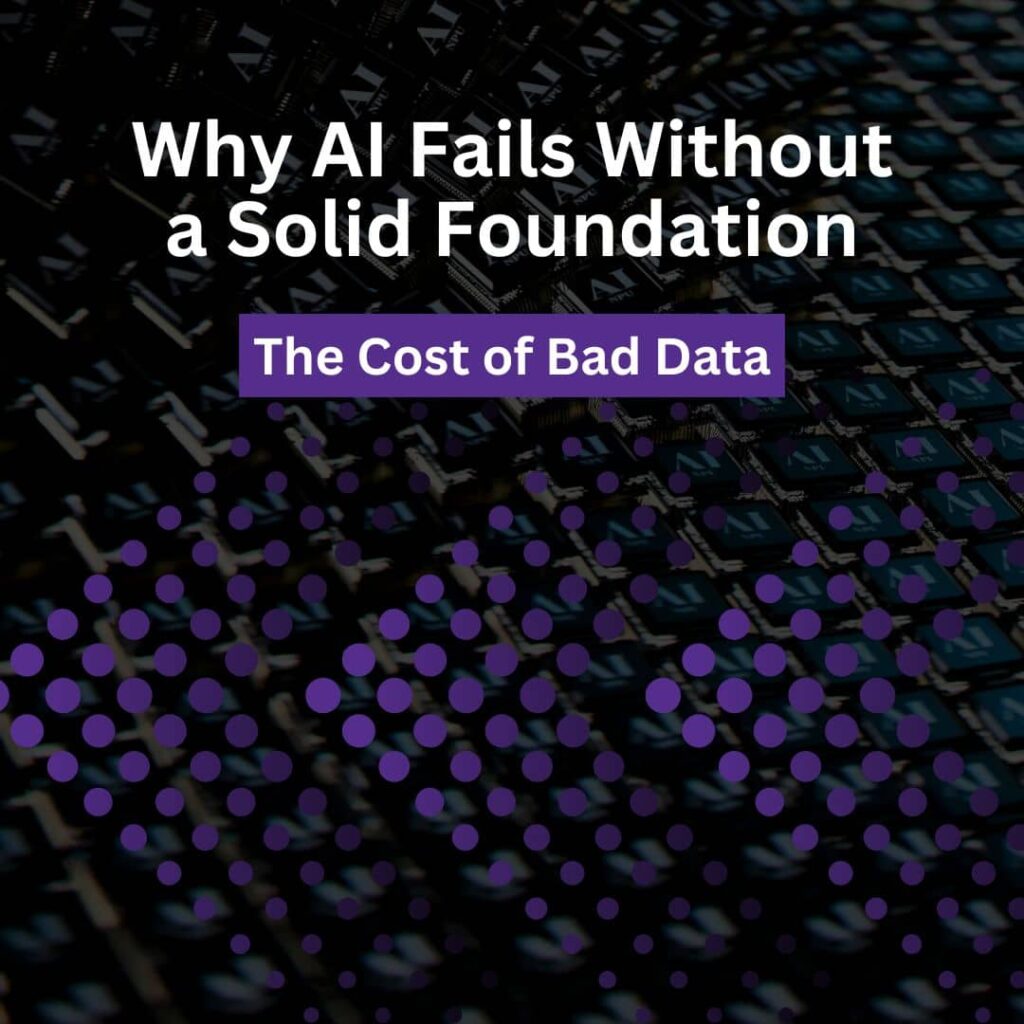AI promises transformative benefits for businesses – from streamlining operations and enhancing customer experiences to unlocking predictive insights. But there’s a catch: AI is only as good as the data it consumes. Feed it flawed, incomplete, or poorly governed data, and the results can be catastrophic.
The Illusion of Intelligence
Picture a retailer rolling out AI to optimise inventory across its nationwide stores. The goal? Reduce waste, prevent stockouts and respond faster to seasonal demand. But within weeks, shelves are overflowing with unsold items in some locations, while others run out of essentials. The culprit? Bad data. Outdated sales records, inconsistent product tags and missing regional trends fed the AI a distorted view of reality. The result: logistical chaos and frustrated customers.
Consider a hospital implementing AI to predict patient readmission risks. The aim? Improve care plans, reduce costs and allocate resources more effectively. But soon, the system begins flagging low-risk patients while missing critical cases. Why? Because the underlying data was riddled with inconsistencies – outdated medical histories, missing discharge notes, and fragmented records across departments. The AI wasn’t failing; it was making decisions based on a false image of the world.
The Data Foundation
Most organisations sit on mountains of data: emails, PDFs, contracts, audio files and transaction logs. Much of it is unstructured, duplicated, or mislabelled. Worse still, a significant portion is “dark data” – information that’s inaccessible or poorly understood. Asking AI to make smart decisions based on this is like building a skyscraper on sand.
The Cost of Bad Data
Poor data quality doesn’t just lead to wrong answers – it introduces systemic risks:
- Hallucinated outputs: AI generates confident but incorrect results
- Amplified bias: Historical errors become entrenched
- Compliance nightmares: Decisions lack transparency and traceability
- Trust erosion: Customers, regulators and executives lose faith in the system
What Successful Leaders Do Differently
A small group of organisations – less than 10% – are turning data discipline into a competitive edge. Here’s how:
- Track data lineage: Understand where data comes from and how it’s used
- Use AI source labels: Clearly disclose data sources and processing methods
- Illuminate dark data: Invest in tools to clean and structure legacy archives
These leaders don’t wait to centralise every data source. Instead, they focus on solving specific problems with targeted, trustworthy datasets.
Turning Chaos into Clarity
To avoid AI failure, organisations must:
- Audit existing data: Identify gaps, duplicates and obsolete records
- Establish governance: Define clear rules for data quality, access and usage
- Prioritise transparency: Make AI decisions explainable and defensible
AI can revolutionise your business – but only if it’s built on a foundation of clean, well-governed data. Before investing in algorithms, invest in your information. Discover how with Key Digital’s Digitisation & Workflow Solutions.
